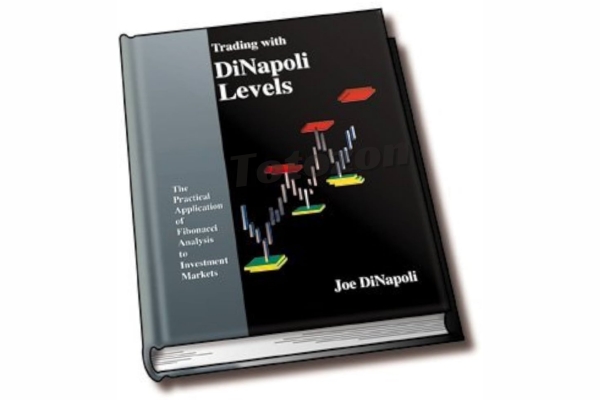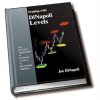Trading With DiNapoli Levels
$6.00
File Size: Coming soon!
Delivery Time: 1–12 hours
Media Type: Online Course
Trading With DiNapoli Levels
Introduction to DiNapoli Levels
DiNapoli levels, named after the renowned trader Joe DiNapoli, are a set of technical analysis tools that help traders identify potential market turning points. These levels are based on Fibonacci ratios but are uniquely applied to price action to enhance trading precision.
Understanding DiNapoli Levels
DiNapoli levels are derived from Fibonacci retracement and extension levels, tailored specifically for trading. These levels include the 38.2%, 50%, and 61.8% retracement levels, along with additional custom levels.
The Origin of DiNapoli Levels
Joe DiNapoli, a veteran trader, developed this method to improve the accuracy of trading signals. By refining Fibonacci analysis, DiNapoli levels provide a more precise approach to identifying key market levels.
Key Components of DiNapoli Levels
- DiNapoli Retracement Levels: Used to identify potential support and resistance zones.
- DiNapoli Extensions: Utilized to forecast future price targets based on past price movements.
Applying DiNapoli Levels in Trading
To effectively use DiNapoli levels, traders need to follow specific steps in their analysis process.
Step 1: Identify the Trend
Before applying DiNapoli levels, it’s crucial to identify the current trend. This helps determine the direction in which to draw the levels.
Step 2: Draw DiNapoli Levels
Using charting tools, draw the DiNapoli retracement levels from the swing high to the swing low (or vice versa) to identify potential retracement points.
Step 3: Analyze Price Action
Observe how the price interacts with DiNapoli levels. Look for signs of reversal or continuation at these key points.
Step 4: Combine with Other Indicators
Enhance the accuracy of DiNapoli levels by combining them with other technical indicators such as Moving Averages, RSI, and MACD.
Benefits of Trading with DiNapoli Levels
Trading with DiNapoli levels offers several advantages that can enhance your trading strategy.
Improved Accuracy
DiNapoli levels provide more precise entry and exit points compared to standard Fibonacci levels.
Versatility
These levels can be applied to various markets, including stocks, forex, commodities, and indices.
Enhanced Risk Management
By identifying key support and resistance levels, traders can set more effective stop-loss and take-profit orders.
Common Mistakes to Avoid
While DiNapoli levels are powerful, there are common mistakes that traders should avoid.
Over-Reliance on DiNapoli Levels
Using DiNapoli levels in isolation can be risky. Always combine them with other forms of analysis.
Ignoring Market Context
It’s essential to consider the broader market context and not rely solely on technical levels.
Practical Examples of DiNapoli Levels
Let’s explore some practical examples to see how DiNapoli levels work in real trading scenarios.
Example 1: Bullish Market
In a bullish market, prices often retrace to the 38.2% or 50% DiNapoli level before resuming the upward trend.
Example 2: Bearish Market
In a bearish market, look for prices to retrace to the 61.8% DiNapoli level before continuing the downtrend.
Tips for Successful Trading with DiNapoli Levels
Here are some tips to help you maximize the effectiveness of DiNapoli levels in your trading strategy.
Tip 1: Use Multiple Time Frames
Analyze DiNapoli levels across different time frames to get a comprehensive view of the market.
Tip 2: Look for Confluence
Identify areas where DiNapoli levels align with other technical indicators or chart patterns for stronger signals.
Tip 3: Practice Patience
Wait for confirmation signals before entering a trade based on DiNapoli levels.
Tip 4: Manage Your Risk
Always use stop-loss orders to protect your trades, especially when trading near key DiNapoli levels.
Conclusion
DiNapoli levels offer a refined approach to Fibonacci analysis, providing traders with precise tools to identify potential market turning points. By understanding and applying these levels, traders can improve their trading accuracy and enhance their overall strategy.
FAQs
1. What are DiNapoli levels?
DiNapoli levels are a set of technical analysis tools based on Fibonacci ratios, designed to identify key support and resistance levels in the market.
2. How do DiNapoli levels differ from standard Fibonacci levels?
DiNapoli levels are a refined version of Fibonacci levels, offering more precise entry and exit points for traders.
3. Can DiNapoli levels be used in any market?
Yes, DiNapoli levels can be applied to various markets, including stocks, forex, commodities, and indices.
4. Should DiNapoli levels be used alone?
While powerful, it’s best to combine DiNapoli levels with other technical indicators for more accurate trading signals.
5. How can I improve my trading with DiNapoli levels?
Use multiple time frames, look for confluence with other indicators, practice patience, and manage your risk effectively.
Be the first to review “Trading With DiNapoli Levels” Cancel reply
You must be logged in to post a review.
Related products
Forex Trading
Forex Trading
Forex Trading
Forex Trading
Forex Trading
Forex Trading
Forex Trading
Forex Trading
Forex Trading
Forex Trading
Forex Trading
Forex Trading






















Reviews
There are no reviews yet.